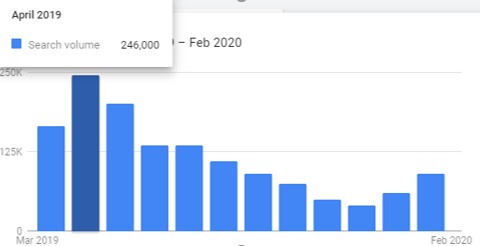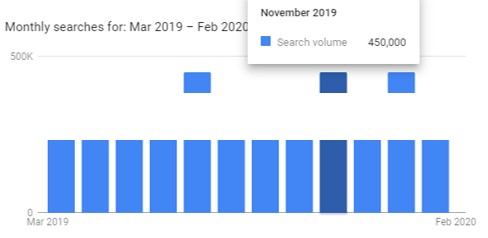Whether you need to fill the gaps in the offseason, or are looking to expand service lines, it doesn’t make much sense unless you know which industries are growing. The home service industry is one that consumers will always have a need for. If you have the skill set or are willing to learn, tapping into one or more of these growing industries can be a profitable move and help keep you afloat financially during your down season(s). The U.S. Bureau of Labor Statistics has a plethora of information on this subject but it can be overwhelming to take in, so this article will break down the job outlook of various home service areas that are growing and that you may be able to take advantage of.
Landscaping
There are several opportunities in the grounds maintenance industry from residential and commercial settings to golf courses and chemical work. No formal education is required for landscaping jobs, but your state may require you to be licensed to work with fertilizers and pesticides. Jobs in this sector are projected to grow by 9% for the next 10 years. This industry opens up many doors as many large corporations and institutions, as well as elderly and busy homeowners turn to professional landscapers for work. If you need to build a team, grounds maintenance is also an ideal job for teenagers and young adults who look for seasonal work.

According to data from Google’s Keyword Planner, customers search for “landscaper near me” the most in the spring with the greatest demand coming in April where there were 246,000 estimated searches in 2019.
Roofers
The roofing industry is projected to grow at 12% for the next 10 years with an average pay in 2018 of $39,970. Learning the skills and techniques to become a roofer will take a few months, however, it can take several years to gain experience working with all the various types of modern roofing. This job requires physical stamina, strength, and willingness to work at new heights and is most needed in the spring and summer months. Roofing could be a great service line to add that will set your business apart from others, especially as the demand for solar energy continues to increase. Interest in solar roofing has more than doubled in the past five years.

Google demand for roofers spikes in August, but is strong from July through October before falling off in November and December. This data is for the phrase “roofing companies”.
Plumbing
Plumbers are needed in nearly every property and employment opportunities for plumbers is projected to grow at 14% over the next 10 years. Besides daily responsibilities of working on piping systems and appliances, workers in this industry are often on call for emergencies and need to be open to working evenings and weekends. If you want to get into plumbing, there will be an investment of time as most states require plumbers to be licensed, and the trade is learned through a 4 to 5 year apprenticeship or technical school. Some of the skills that will be learned are pipe system design, tool use, welding, and safety. In 2018 the median annual wage for plumbers was $53,910, so this can be a lucrative side hustle along with your regular contracting jobs.

Demand for plumbers is pretty strong throughout the year, but it’s strongest through the colder months with spikes in November and January. This data is for the search “plumbers near me”.
Electrical
Electricians learn their trade through apprenticeships or technical school, and most states require them to be licensed. Learning this industry can take up to 5 years because you will learn electrical theory, code requirements, safety practices, industry relevant math, and how to read blueprints. The median annual wage for electricians was higher than many other industries at $55,190 in 2018, with the highest 10% earning $94,620 or more. With a 10% projected growth in employment over the next 10 years, gaining the skills to do this job, or hiring someone that already does can be incredibly valuable for your small business.

Electricians are another stable group, with strong demand throughout the year. Searches for “electrician” are strongest from April through October.
Carpenters
The carpentry industry is very broad thus requiring a wide skill set. Carpenters build and fix frameworks, install fixtures, drywall, molding, windows, and much more. This job is physically demanding as it involves kneeling, standing, lifting, and moving throughout the day. Most carpenters learn through apprenticeships and there are also programs that offer technical training where you can acquire the basic knowledge and techniques. This industry is projected to grow at 8% over the next 10 years because of its broad range of opportunities. As cities continue to develop and the population continues to grow, there will always be a need for a handy carpenter.

Search data for the phrase “carpenter” shows a peak season from July through October, then a steady decline in November and December before bouncing back again in January.
Painting
Whether you are looking to work indoors or outdoors, painters have the ability to work in many different environments. Painters could be working on interiors and exteriors of homes and commercial buildings as well as structures like bridges. While you may need safety training to work with harnesses and scaffolding, this trade does not require any formal education making it an easy side hustle to enter into. Since this industry is physically demanding, there are plenty of opportunities to jump in when people retire or need to be replaced. Jobs in painting are projected to grow at a rate of 6% over the next 10 years. This industry could easily be added into your lines of service and increase your income since the average annual wage for painters in 2018 was $38,940.

Searches for “painters near me” spike in July and August and again in February. November and December prove to be the slowest months of demand for painting contractors.
Whether you are looking to expand your business, pick up a new skill or earn extra income, the home service industry is a great one to get into. Many jobs outside of this industry have uncertain levels of growth, but it is safe to say there are always opportunities with contracting jobs. Once you get started on your new endeavor, JobFLEX will be here to help make invoicing and estimating easier.



